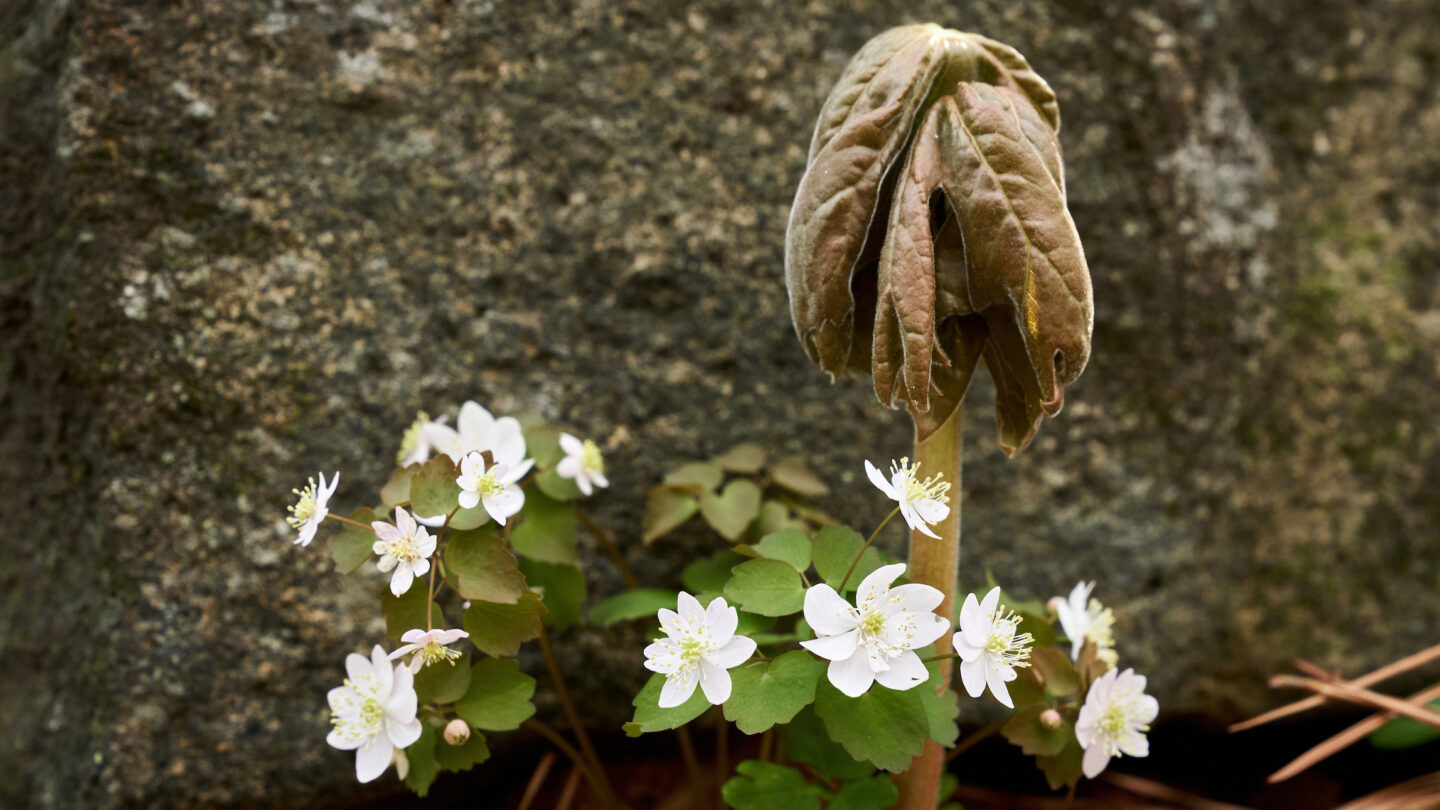
Podophyllyum peltatum (may apple) and Thalictrum thalictroides (rue anemone), Quarry Garden
As February rolls into March, the weather begins to warm and the cold, short days of winter are eclipsed by the soft warmth of the spring sun. Warm rains begin and the cold begins to relax its grip on the soil. Before winter truly passes, the first of the new year’s spring wildflowers begin to push their fresh growth through last autumn’s leaves. Like every year since the great Pleistocene ice sheets wreathed the crown of the Earth, spring ephemeral wildflowers burst into life in the forests of the southeastern United States—heralds of the verdant year of growth to come.
The native spring ephemeral wildflowers of the southeastern United States begin to emerge at the end of February and into early March. Spring ephemerals are primarily found in forests, although they can also be found along the edges of forests or in shrubby habitats. Ephemeral wildflowers emerge early in the year to take advantage of the leafless tree canopy. Although most of these plants are denizens of forests, they do not actually prefer shade. They emerge, produce leaves, and flower before the forest canopy has fully blocked the sunlight from the forest floor, thereby taking advantage of a very specific slice of yearly time. By the time the full shade, heat, and drought of summer roll around, spring ephemeral wildflowers have largely finished their year of growth.
This life cycle is geared towards the survival strategies of the plants, but for the human observer it produces a spectacular, condensed period of plants and flowers to marvel at each spring. Much like the vaunted superblooms that occur in the western United States, the spring wildflowers of the southeastern forests are an explosion of color, foliar variety, and natural beauty. In our Goizueta Gardens, southeastern native plants are a central part of our living collections, spring ephemerals included. They are making their spectacular appearance now, and a few are highlighted below:
Bloodroot.
Sanguinaria candensis
Bloodroot is one of the earliest ephemerals to emerge in the Piedmont, producing large, white flowers beginning in late February. The flowers generally emerge slightly before the leaves. This small plant stands out in the brown of the late winter woods—its bright white flower a beacon of the coming spring. Its common name comes from the root of the plant, which is vivid orange-red in color. Look for this plant in Swan Woods, especially along the edge of the Wood Cabin meadow below the boardwalk observation platform, as well as in the Quarry Garden.
Trout Lily.
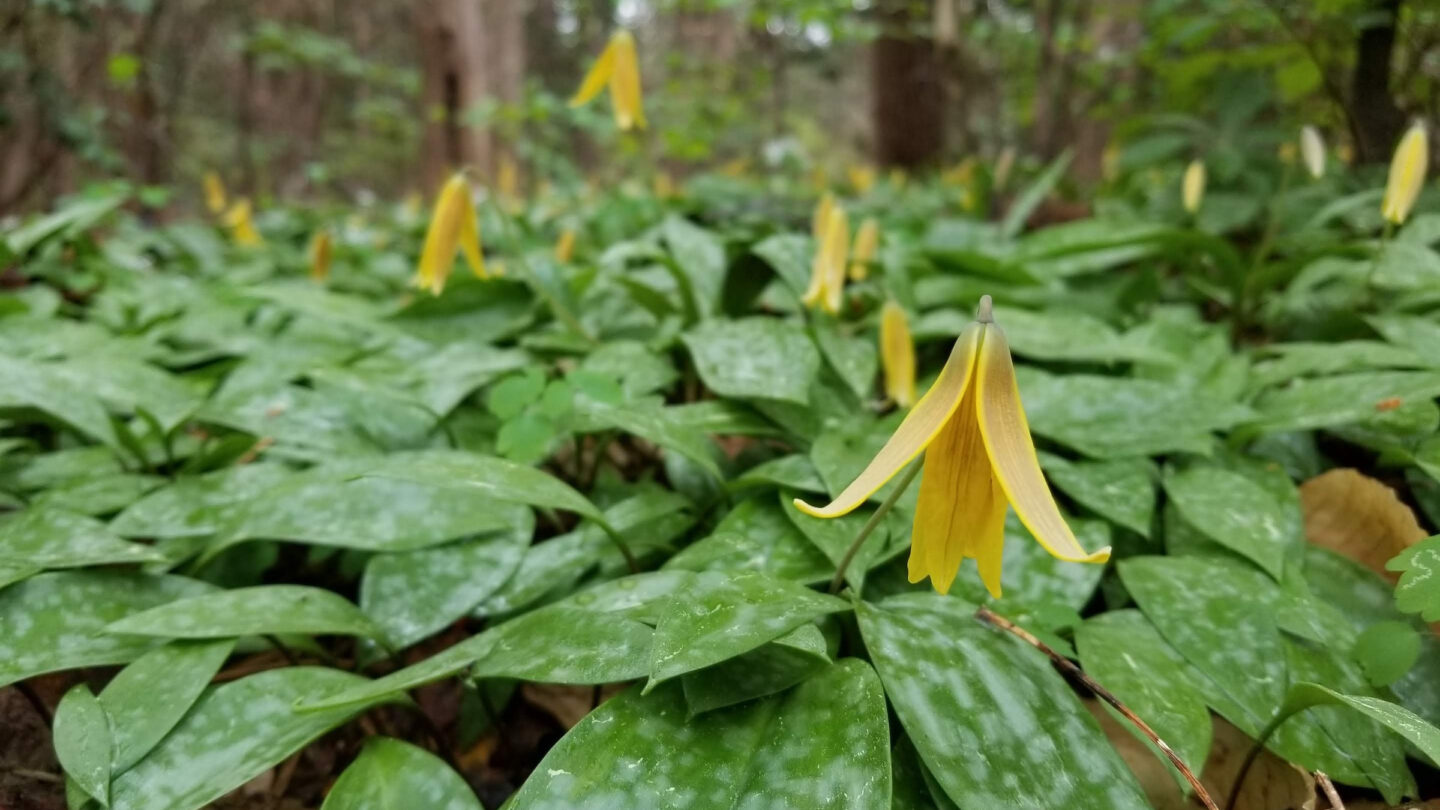
Erythronium americanum
Trout lily, like bloodroot, is one of the earliest spring wildflowers to emerge in the southern woods. It flowers at about the same time as bloodroot, starting in late February and continuing through the end of March. Trout lily produces ovoid, green leaves, mottled with purplish-brown spots and large, drooping yellow flowers held on stems above the leaves. Trout lilies are found in damp forests and bottomlands across the state and are one of the showiest of the spring ephemerals in the southeast. There are several large patches of trout lilies along the paths in Swan Woods, and they can also be found in the Asian Garden and the Quarry Garden.
Sweet Betsy Trillium.
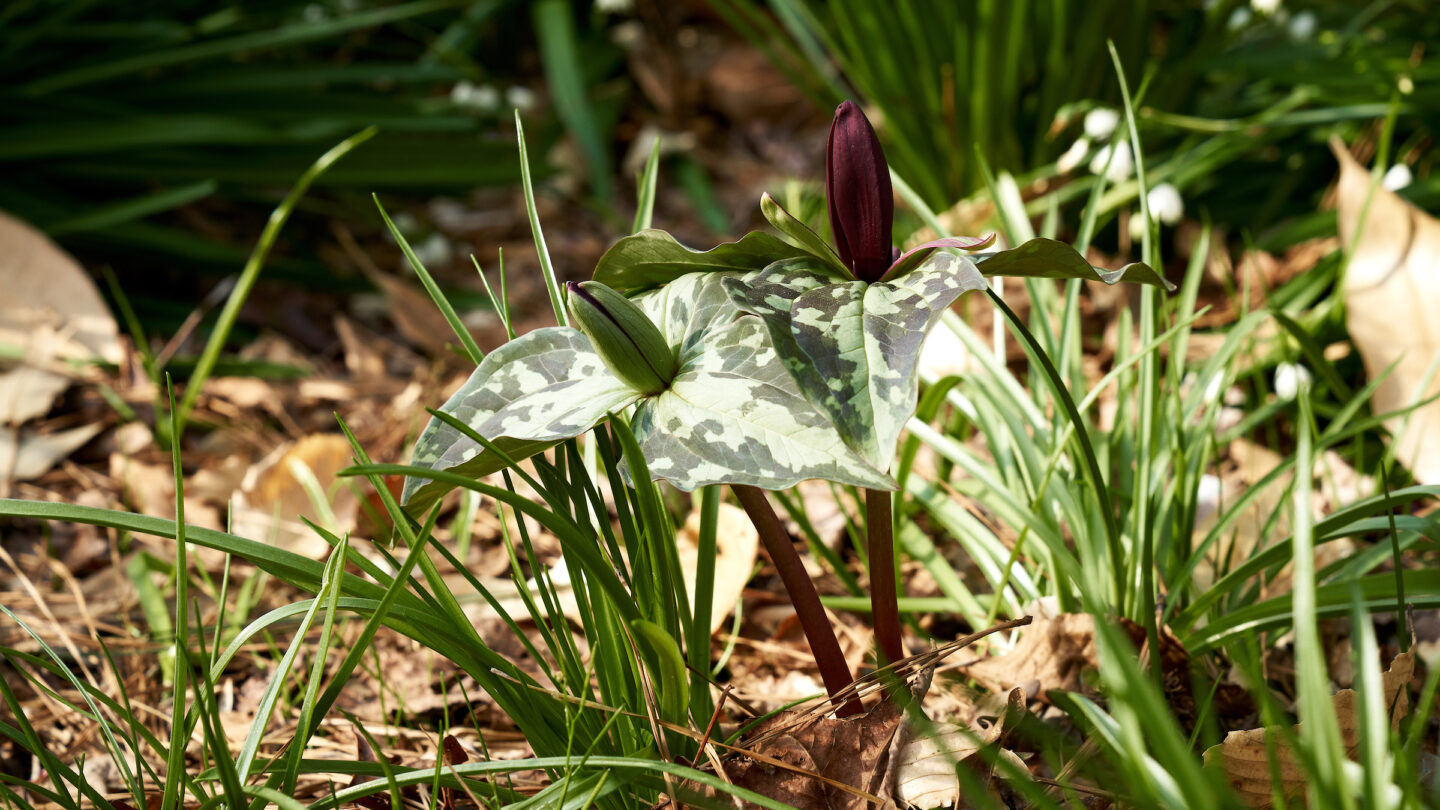
Trillium cuneatum
Sweet Betsy trillium is one of the most common trillium species in Georgia, and one of the earliest to flower at the end of winter. This trillium begins to send its leaves up into the late winter air at about the same time as bloodroot and trout lily, but it doesn’t flower until about mid-March. The “tri” in trillium references the three leaves and three flower petals of these plants—an easy way to identify them. The flowers of sweet Betsy are a dark maroon and emerge directly from the leaves of the plant. There are more species of trillium in Georgia than in any other state, and the largest diversity of trilliums globally is in the southeastern United States. Trilliums can be found in damp woods across the state and are one of the most intriguing of the native woodland wildflowers. Look for sweet Betsy in all of the wooded areas in the Goizueta Gardens, but especially in the area of Swan Woods along the creek and in the Quarry Garden.
Rue Anemone.
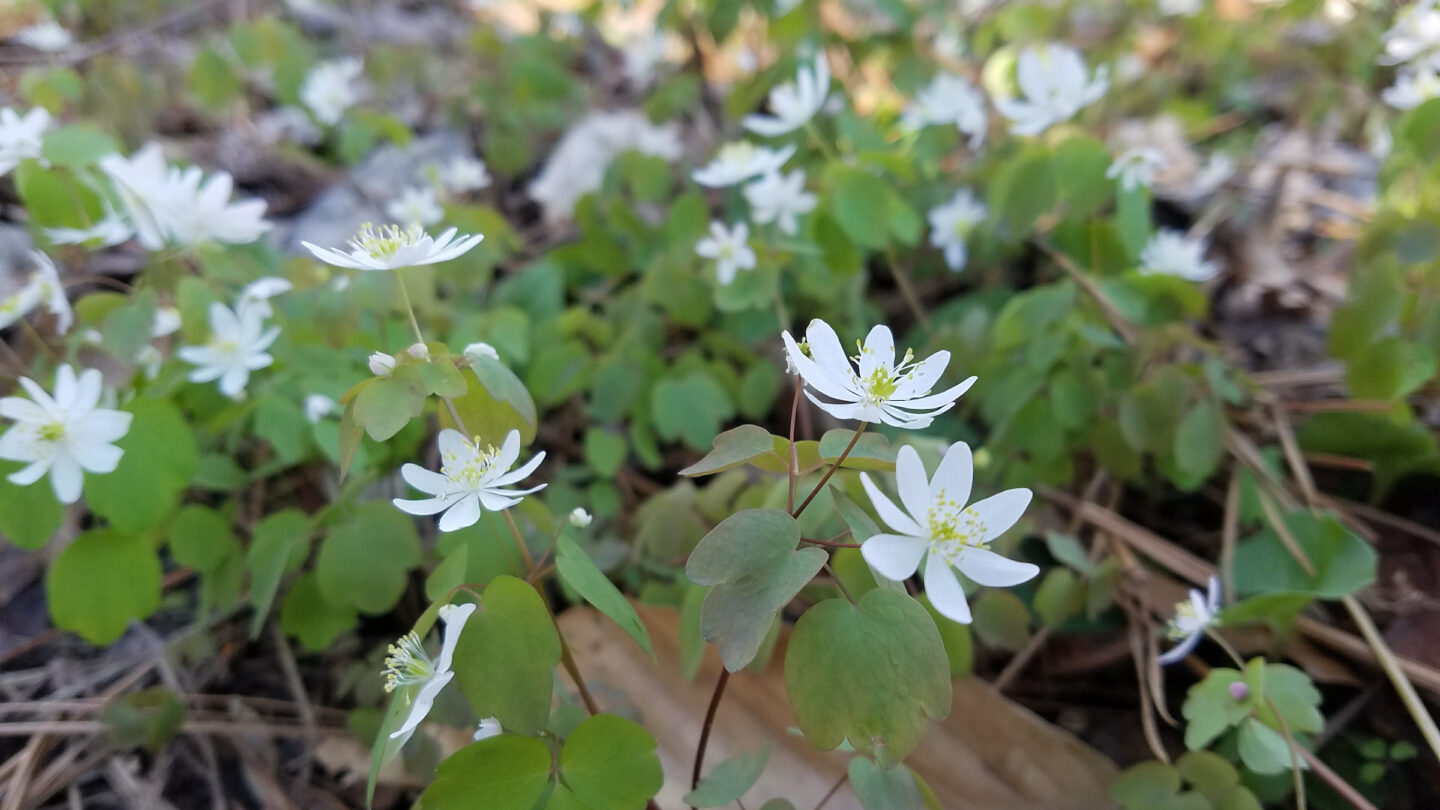
Thalictrum thalictroides
Rue anemone is one of the most easily overlooked of the native southeastern woodland wildflowers. Rue anemone is a small plant, with delicate white flowers that rise on very thin stems above many small heart-shaped leaves. Rue anemone tends to grow in small clumps of individual plants in damp forests and along creeks, primarily in the northern part of Georgia. This ephemeral emerges early, often around the same time as trout lily, and flowers throughout the spring, until the summer heat sends it back under the leaf litter. There is a large patch of rue anemone in Swan Woods along the path to the Wood cabin, and there are several large patches in the Quarry Garden as well.
May Apple.
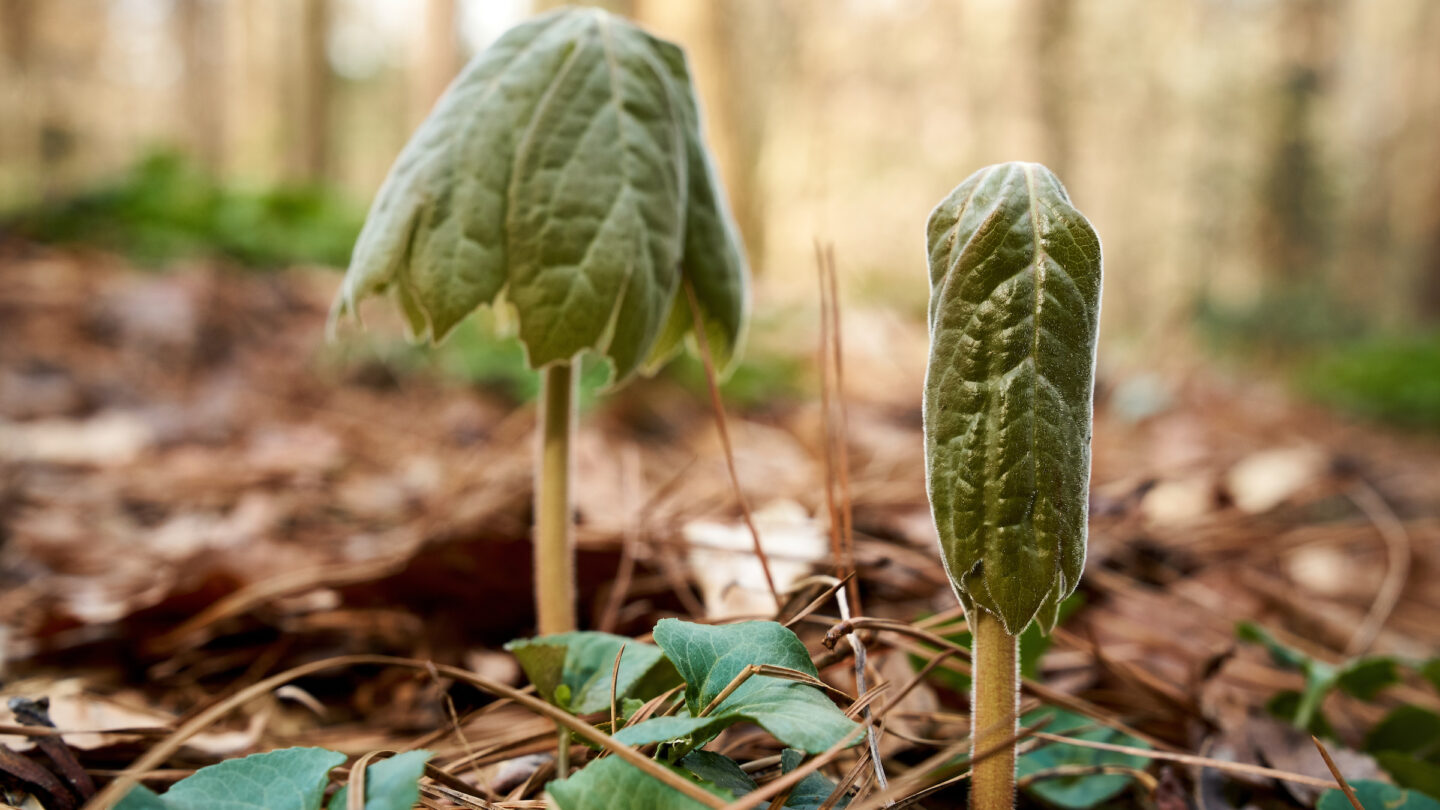
Podophyllum peltatum
The may apple is one of the most delightful of the ephemeral harbingers of spring; its twisting new shoots are a sure sign that the cold of winter is fading and the green spring world is eminent. May apple is more noticeable for its foliage than its flower. Growing in colonies of plants connected by underground rhizomes, may apples sprout up asparagus-like stalks in mid-March. Each stalk is wrapped in a large, single leaf which unfurls as the stalk rises from the forest floor. Large, white flowers appear later in the spring, but only on plants that have two leaves. May apples can be found in bottomland forests and damp upland forests in mid to north Georgia. They can also be found in Swan Woods in the area along the creek, as well as in the Quarry Garden.


